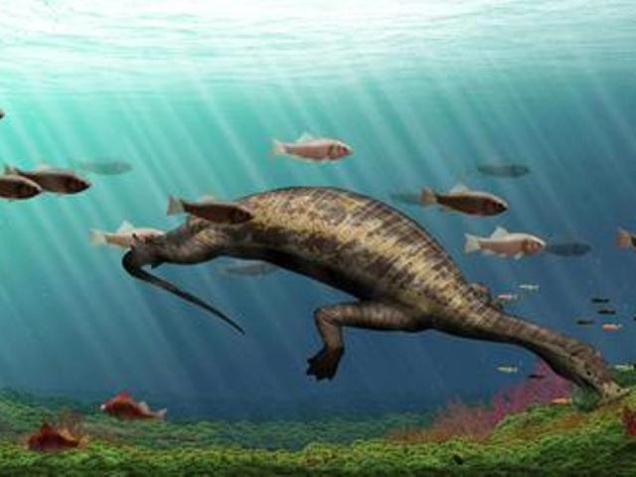
The fossil, determined in 2014, has a poorly preserved head, however it regarded to have a flamingo-like beak.
Scientists located that “beak” is actually a part of a hammerhead-shaped jaw equipment, which it used to feed on vegetation on the ocean ground.
Very atypical animal
“It’s a very unusual animal. It’s were given a hammerhead, that is specific, it’s the first time we’ve visiblea reptile like this,” said Olivier Rieppel, from the field Museum in Chicago.
The reptile’s call, Atopodentatus unicus, tips at its muddled past — it is Latin for “particular strangelytoothed.”
but, newly observed fossils make it clearer how its “unusual enamel” had been actually configured. Itswide jaw became fashioned like a hammerhead, and alongside the threshold, it had peg-like teeth. Then,further into its mouth, it had bunches of needle-like enamel, researchers said.
“To discern out how the jaw suit collectively and the way the animal definitely fed, we bought someyoungsters’s clay and rebuilt it with toothpicks to represent the tooth,” stated Mr. Rieppel.
“We checked out how the upper and decrease jaw locked together, and that’s how we proceeded anddescribed it,” he said.
weird jaw helped it to consume plants
Atopodentatus unicus used its bizarre jaw to assist it devour flowers, researchers said.
“It used the peg-like front teeth to scrape plant life off of rocks on the ocean floor, after which it opened its mouth and sucked inside the bits of plant material,” Mr. Rieppel said.
“Then, it used its needle-like enamel as a sieve, trapping the vegetation and letting the water back out, like how whales filter out-feed with their baleen,” he said.
First herbivorous marine reptile
not most effective does this discovery solve the thriller of the unusual-toothed animal, but it additionallyaffords us with an example of the primary herbivorous marine reptile.
“The jaw structure is truly that of an herbivore. It is similar to other marine animals that ate flowers with afilter out-feeding machine, but Atopodentatus is older than them by means of approximately eight million years,” said Mr. Rieppel.
world’s largest apocalypse?
Atopodentatus also enables tell a bigger tale about the sector’s biggest mass extinction 252 million yearsago, researchers stated.
“Animals residing the years surrounding the Permian-Triassic extinction help us see how lifestyles in the world reacted to that event,” said Mr. Rieppel.
“The life of specialised animals like Atopodentatus unicus suggests us that life recovered and diversifiedgreater quickly than formerly thought,” he stated.
The take a look at become posted in the magazine technological know-how Advances.



